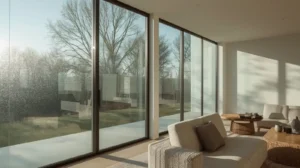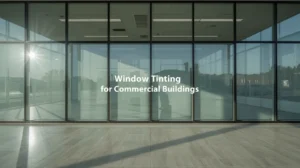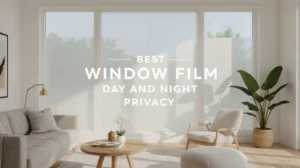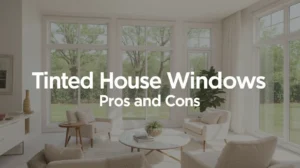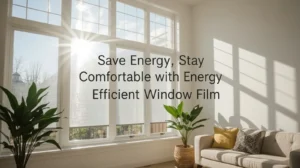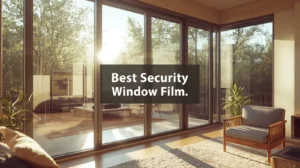Tinting your home windows can do much more than add style. Modern films improve comfort, block harmful sunlight, and create privacy. With so many choices available, it’s natural to ask about the different types of home window tint and which one might be best for your space. From energy-saving films that lower utility bills to decorative options that enhance design, each type serves a unique purpose. This guide takes a closer look at how window tint works, the main categories available, and what homeowners should consider before making a decision.
Why Homeowners Consider Window Tinting
Windows connect us to the outdoors, filling our rooms with natural light and opening up views. But along with these benefits come challenges. Direct sunlight can make a home uncomfortably hot, and harmful ultraviolet rays fade wood floors, rugs, and upholstered furniture. Uncovered glass also makes it easy for people outside to peek in, raising privacy concerns.
That’s why many families explore window tinting options. Installing film offers a balance between openness and protection. Here are some common reasons:
- Lowering energy bills: A home with large south-facing windows can feel like a greenhouse in summer. With solar control tint, the glass reflects heat outward, helping air conditioning systems run more efficiently.
- Protecting belongings: Sunlight fades drapes, artwork, and even leather sofas. By blocking up to 99% of UV rays, window films slow down this damage.
- Adding privacy: In neighborhoods where houses sit close together, a frosted or reflective film helps keep indoor life more private without heavy curtains.
- Reducing glare: Families who work or study from home benefit from tint that stops sunlight from bouncing off screens and surfaces.
For many, tinting becomes an investment in comfort and peace of mind rather than just a decorative choice.
Understanding How Window Tint Works
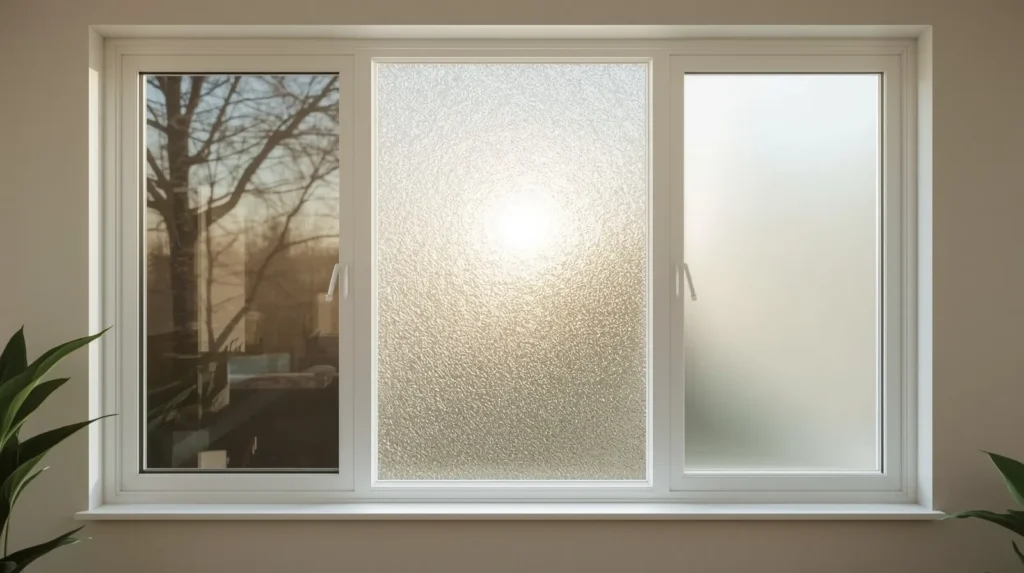
Glass alone cannot filter much. It allows most visible light, heat, and UV rays to pass through. Films, on the other hand, are designed to change the way light and heat interact with glass.
At its core, a film is a thin layer applied directly to a window’s interior or exterior surface. Depending on its design, it may:
- Absorb sunlight: Dyed films take in solar energy, making rooms cooler.
- Reflect energy: Metalized or ceramic coatings bounce heat and UV rays away.
- Diffuse light: Frosted films scatter light, allowing brightness without clear visibility.
Many homeowners wonder: Is a tinted window translucent? The answer depends. Frosted films are translucent, letting light in while blurring images. On the other hand, solar films may appear nearly transparent but still block heat.
Another common question is: Is tinted window transparent or translucent? The truth is, it can be both. Transparent films provide a clear view while limiting heat. Translucent films block detail for privacy. Knowing this difference helps when selecting the right type of tinted film for each room.
Exploring the Different Types of Tint
So, what types of tint are there for homes? Films can be grouped by purpose, with each offering unique benefits:
- Solar control tint: Keeps heat and UV rays out, reducing reliance on air conditioning.
- Privacy tint: Creates one-way visibility or frosted finishes that keep prying eyes out.
- Decorative tint: Adds patterns, colors, or textures for design appeal.
- Security tint: Strengthens glass, holding shards together if broken.
- Specialty tint: Includes advanced films like switchable smart tint that changes from clear to opaque with a remote.
When comparing the different types of window tint, it helps to think about your main goal. For example:
- Want to protect furniture and floors? Choose solar films.
- Need bathroom privacy without blocking natural light? Frosted decorative tint works best.
- Looking to prevent break-ins? Security films add peace of mind.
These categories show that not all tints are equal, and one type may be better suited for certain rooms than others.
Common Types of Home Window Tint Films
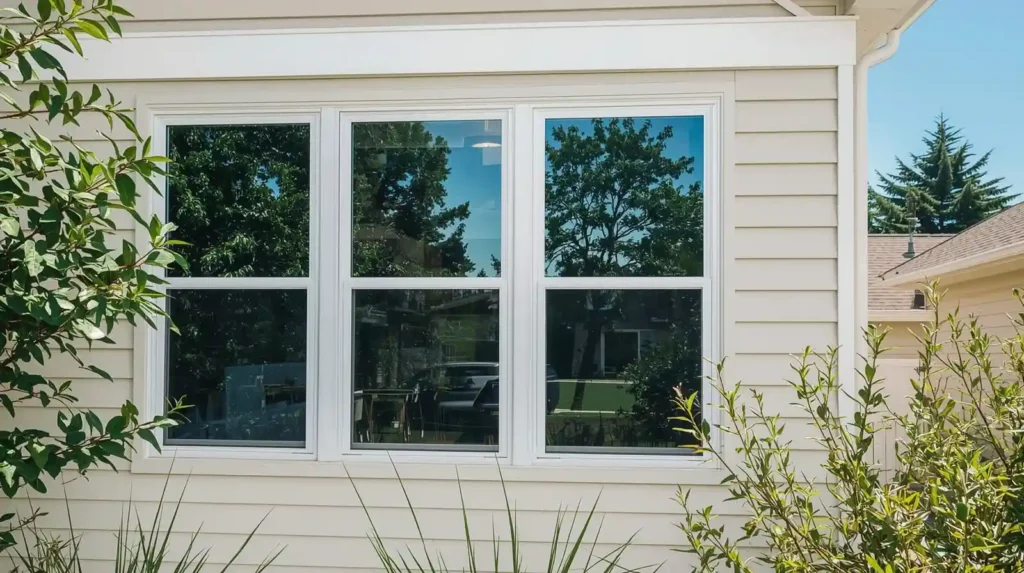
When you speak with an installer or shop for film, you’ll often hear about several tint film types. These materials differ in technology, cost, and performance.
Dyed Films
- Made with a layer of dye that absorbs sunlight.
- Budget-friendly and effective at reducing glare.
- Over time, dye can fade, so lifespan is shorter.
Metalized Films
- Use tiny metallic particles to reflect sunlight.
- Strong and durable, with excellent heat rejection.
- Sometimes interfere with radio, GPS, or Wi-Fi signals.
Carbon Films
- Matte finish that blocks heat without shiny reflections.
- Long-lasting and do not fade like dyed films.
- Higher cost than dyed but excellent performance.
Ceramic Films
- Use advanced ceramic particles to filter heat and UV rays.
- Do not affect signals or interfere with visibility.
- Premium option with the best performance and longest lifespan.
These represent the most common window tint types you’ll find. Each balances cost, appearance, and performance differently. That’s why installers often recommend matching the types of tinting film with your budget and comfort goals.
Decorative and Privacy Tinting Options
Privacy is a big reason homeowners consider tinting. A kitchen window facing a neighbor’s yard or a bathroom window that allows too much visibility may need coverage. Instead of closing blinds, privacy films let light in while keeping eyes out.
Popular home window tint options for privacy include:
- Frosted Films: Blur images but allow soft natural light.
- Etched or Patterned Films: Mimic expensive designer glass.
- Reflective Films: Create a mirrored effect during the day for one-way privacy.
On the decorative side, films add personality to glass. From stained-glass styles to geometric patterns, these types of tint films enhance beauty while serving a function.
For example:
- A homeowner may install frosted film on a front door with glass panels for privacy.
- In an office, etched films can provide branding or stylish partitions.
- In bathrooms, frosted glass films ensure privacy without heavy curtains.
This is why many families choose these window tinting options they combine design with practical benefits.
Energy-Efficient Window Tint Types
One of the strongest reasons families decide to tint their windows is the chance to make their homes more energy efficient. Ordinary glass does little to stop the transfer of heat. During hot summers, rooms can feel like ovens, and during cooler months, valuable warmth escapes easily. Films designed with energy performance in mind solve this problem by creating a barrier that works all year round.
Energy-efficient films use advanced coatings that reflect a large portion of solar heat while still allowing natural light to pass through. This means your living room can stay bright but remain far cooler than it would with bare glass. In winter, the same film helps trap indoor warmth, reducing the need to run the heater constantly. Many homeowners are surprised to learn that the right film can actually help lower both air-conditioning and heating costs, making it a year-round investment.
The savings on utility bills are not the only reason to consider these films. They also block nearly all ultraviolet rays, which are known to cause fading on wood flooring, area rugs, or upholstered furniture. By reducing this silent damage, energy-focused tinting protects your home’s value and the items inside it.
Color and Style Choices for Window Tint
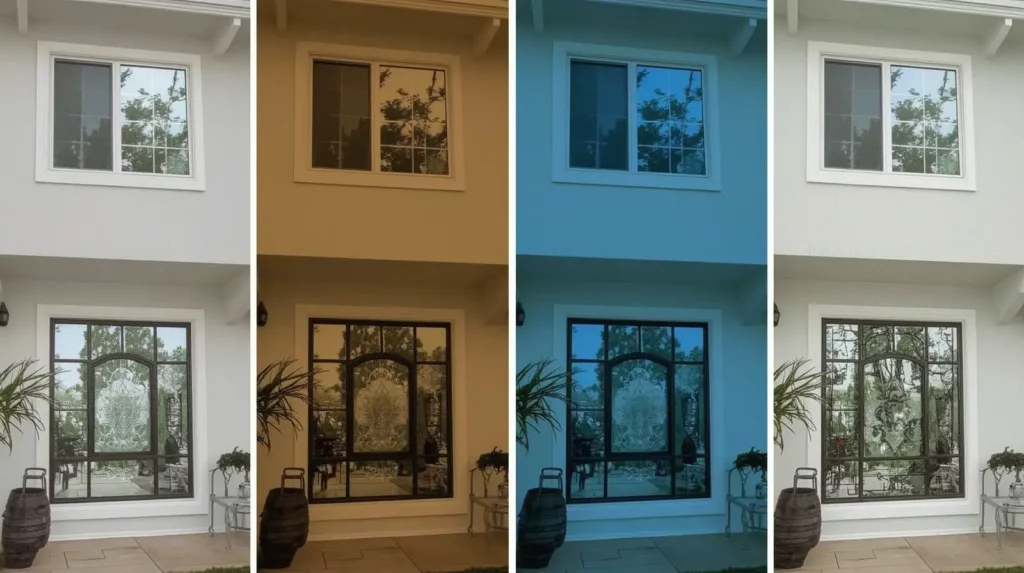
When people think about tint, they often picture dark glass, but modern films offer a wide variety of looks. Today’s technology allows homeowners to choose from subtle neutral tones to bold colors that change the character of a room. For example, someone who prefers a natural appearance might select a light gray or bronze tint that blends into the window without drawing attention. Another homeowner who wants a more contemporary design may prefer a cool blue or mirrored style that makes the home stand out.
Decorative films also provide countless style options. Frosted white films, etched patterns, and even stained-glass imitations are available to suit different tastes. These films are not only chosen for privacy but also as a way to elevate interior design. Bathrooms, kitchens, and entry doors can all benefit from decorative styles that add visual interest without replacing the window itself.
Color and style matter because windows are one of the most visible features of a home. The right choice can complement exterior finishes and interior décor, creating a unified design. When you explore the many colors and finishes available, you quickly realize that tinting has evolved from a purely functional solution into a customizable design tool.
Pros and Cons of Different Types of Tinted Window Glass
Each type of tint film comes with its strengths and limitations, and it is important for homeowners to weigh these carefully. For instance, dyed films are often the most affordable option, making them attractive for budget-conscious families. They reduce glare and add some level of privacy, but the dyes can fade over time, leading to a shorter lifespan compared to other films.
Metalized films are extremely effective at reflecting heat and are known for their durability. However, the metallic particles within the film can sometimes interfere with Wi-Fi, GPS, or even cell phone signals. This drawback can be frustrating for those who depend heavily on wireless technology.
Carbon films offer a step up, combining a sleek matte finish with strong heat rejection. They do not fade like dyed films and do not cause signal problems like metalized versions. Still, they come at a higher price, which may not suit every homeowner’s budget.
Ceramic films sit at the top of the performance ladder. They are highly advanced, blocking heat and ultraviolet rays without affecting visibility or electronic signals. The drawback is cost, as ceramic films are usually the most expensive option available. For many, however, the long lifespan and premium performance justify the investment.
Understanding these trade-offs helps families make a decision that matches both their goals and their budget. The key is to focus on what matters most in your household whether that is cost, appearance, or long-term performance.
Comparing Residential Window Tinting Options in Nashville
Every city has its own climate and lifestyle needs, and in Nashville, the weather plays a major role in window film choices. Summers in the region can be long, hot, and humid, which makes energy efficiency one of the top priorities for homeowners. Solar control films that block heat and ultraviolet rays are especially popular because they help reduce the heavy strain on air conditioning systems during peak months.
At the same time, many homes in Nashville sit close together, making privacy a real concern. This is why frosted and reflective films are often installed on front-facing windows or bathroom glass. They allow natural light to continue flowing in while keeping the indoors shielded from view. The ability to see out while limiting visibility from the outside is a valuable feature in busy neighborhoods.
Professional installers in Nashville, such as Tint Solutions Tennessee, often recommend a balanced approach. For example, solar control films might be applied to large living room windows to improve comfort, while decorative frosted films are used in bathrooms and kitchens for added privacy. This combination provides homeowners with energy savings, comfort, and style tailored to local needs.
How to Choose the Best Tint Film for Your Home
With so many choices available, homeowners often ask, what are the different types of window tints and how do you know which one to select? The answer lies in identifying your main priorities. If reducing monthly energy bills is the goal, then solar or ceramic films should be at the top of your list. If privacy is more important, then frosted or reflective styles may be the best fit. For those who want to make a design statement, decorative films offer endless patterns and colors.
It is also important to consider the type of glass in your home. Single-pane and double-pane windows may respond differently to certain films, and using the wrong type could affect performance or even cause damage. This is why speaking with a professional installer matters. Companies like Tint Solutions Tennessee have experience matching films with specific window types, ensuring safety and durability.
Homeowners should also pay attention to warranties. Quality films often come with long guarantees that protect your investment for years. Choosing a film backed by a strong warranty adds peace of mind and ensures you are getting value for your money. Ultimately, the best film is one that balances your needs, fits your budget, and enhances your daily living.
Final Thoughts on Home Window Tint Types
When it comes to the many types of home window tint, the choices may seem overwhelming at first. Yet each option has been developed to address real challenges faced by homeowners whether that is heat control, privacy, style, or safety. By taking the time to understand the differences, you can select a film that truly fits your lifestyle.
For families who want to enjoy cooler rooms in summer, protect furnishings from fading, and keep prying eyes away, tinting becomes a valuable upgrade. With professional installation, films not only look natural but also last for years without bubbling or peeling. In short, tinting is not just a cosmetic improvement but a functional solution that makes daily life more comfortable and secure.
If you are considering making this change, now is the perfect time to explore your options. The right film can add value, beauty, and long-term savings to your home.
Ready to see the difference window tinting can make? Reach out today to learn more about the films available and schedule an installation that fits your needs. Comfort, privacy, and style are just one call away.

